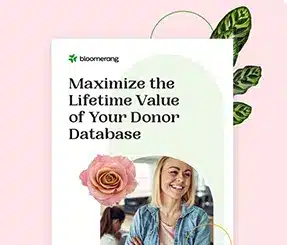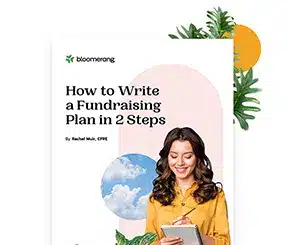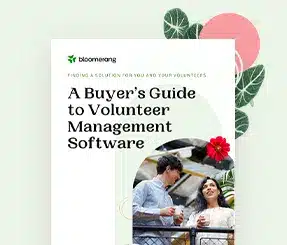The Case Of The Missing Donations: 4 Clues To Raising More Without Asking More


Full Platform Overview Chat With Us



Full Platform Overview Chat With Us




You’re sending appeals, running campaigns, thanking donors—so why aren’t the numbers growing? Donors are slipping away, engagement is stalling, and each new campaign feels like more work for less return. The real mystery? Some nonprofits seem to fundraise effortlessly while others struggle with donor fatigue. The answer isn’t asking more. It’s asking smarter—building relationships that drive giving without constant appeals. Let’s crack the case with four fundraising strategies that make it happen.
🚨 The evidence: More asks, fewer results
Nonprofits are sending more appeals than ever, but response rates keep dropping.
🔎 What the numbers reveal:
📉 Nonprofits raised an average of $76 per 1,000 fundraising emails in 2023—a 20% decline from 2022.
📉 Retention is slipping, meaning nonprofits are losing donors faster than they’re gaining them.
📉 Donor fatigue is real. Too many generic asks lead to disengagement, making it harder (and more expensive) to bring donors back.
🕵️♂️ The case breaker: The best fundraisers aren’t asking more. They’re asking better.
Fundraising works best when it’s based on what donors care about—not just what nonprofits need. The best fundraisers track donor engagement, not just gifts.
✔ Past giving behavior matters. Longtime donors aren’t new supporters—treat them like the committed partners they are.
✔ Engagement reveals intent—and helps guide your next move. When donors open emails or click links, they’re showing you what resonates. Use that data to send more targeted appeals that reflect their interests and behavior.
✔ Recurring gifts mean something. When someone gives multiple times in a short window, they may be ready to commit monthly.
💡 A better way: Focus on relevance instead of volume.
🚨 The evidence: Traditional segmentation isn’t cutting it
Many nonprofits segment donors by gift size alone. But gift size doesn’t tell you why someone gives—or how to keep them engaged. Effective segmentation goes deeper, helping you build stronger donor relationships and increase giving without increasing asks. For example, segmenting donors by motivation—like altruism, trust in the organization, or response to marketing—inspires more targeted and effective outreach than traditional methods.
🔎 Better segmentation strategies:
✔ Interest-based segmentation: Are donors passionate about education, environmental causes, or advocacy? Align your messaging with what matters to them.
✔ Behavior-based segmentation: Tracking donor actions—event attendance, email engagement, or volunteer history—makes outreach more relevant.
✔ A/B testing: Not every message resonates the same way for every audience segment. Testing subject lines, messaging, and CTAs helps pinpoint what works.
🕵️ The case breaker: Personalized outreach outperforms one-size fits all fundraising. When donors receive messages that match their interests and actions, they’re more likely to stay engaged and give again.
Your nonprofit already has the data—now put it to work.
✔ Tailor messages to different donors. What inspires a first-time donor may not resonate with a longtime supporter. Use engagement history to refine messaging.
✔ Reconnect with lapsed donors in a meaningful way. A generic “We miss you” email won’t cut it. Reference past gifts and their impact.
✔ Make matching gifts easy. Many donors don’t realize their gifts qualify. Automate reminders and provide direct links to company match programs.
✔ Use location-based insights. If certain donors are more likely to respond to a disaster relief appeal, tailor your outreach accordingly.
💡 Make every ask count. Instead of relying on volume, use segmentation to make sure your outreach speaks directly to the things donors care about.
🚨 The evidence: Donors who feel valued give again
Nonprofits often focus on the next donation—but donor retention depends on what happens after the gift. Donors give again when they feel appreciated and see their impact.
🔎 Stronger appreciation strategies:
✔ Impact updates that connect the dots. Donors don’t just want appreciation—they want to see the results of their giving. Donors who receive regular, impact-focused updates are 80% more likely to keep supporting a nonprofit.
✔ Unexpected gestures of gratitude. Handwritten notes, personalized videos, and donor appreciation events (where you don’t ask for money) can deepen relationships. These efforts foster trust and reinforce donor commitment.
🕵️♂️ The case breaker: Retention is fueled by recognition. Donors who feel seen and valued are far more likely to stick around.
Donor appreciation isn’t just about saying thanks—it’s about reinforcing their role in your mission and inspiring them to stay engaged.
✔ Thank donors in a way that stands out. A generic “thank you” isn’t enough. Making a thank-you call within 90 days can increase retention rates by 27%.
✔ Show donors their impact. Donors don’t just want appreciation—they want to see results. A study found that donors who receive impact-focused updates are 80% more likely to continue giving.
✔ Make gratitude unexpected. Handwritten notes, personalized videos, and donor appreciation events (with no ask) deepen relationships and build long-term loyalty.
💡 A better way: Stop treating appreciation as an afterthought. Make donor recognition a strategic priority, and giving will follow.
🚨 The evidence: Appeals that don’t land
Donors give when they see themselves in the story. But appeals centered on a nonprofit’s achievements can distance them instead of drawing them in.
🔎 What donor-centric storytelling looks like:
📢 Weak: “We provided 10,000 meals this year.”
✅ Strong: “Because of you, 10,000 people didn’t go hungry this year.”
✔ Donors don’t want to hear what your nonprofit did. They want to hear what they made possible.
✔ Storytelling that creates an emotional connection increases donor engagement.
✔ Appeals that portray the donor as the hero consistently outperform generic ones.
🕵️♂️ The case breaker: Donors want to see their impact. Show them, and they’ll stick around.
✔ Speak directly to donors. Use “you” language to make appeals more personal—“Your generosity made this possible.”
✔ Show real impact. Instead of listing achievements, highlight stories that illustrate how people have benefited.
✔ Focus on transformation. What changed because of donor support?
💡 The takeaway: A compelling story does more than inform—it inspires action.
The most effective fundraisers know that more asks don’t always lead to more giving. Strategy makes the difference. Prioritizing donor relationships, thoughtful segmentation, and data-driven decisions helps the best campaigns grow while others struggle.
🔍 Here’s what finally cracks the case:
✅ Donor insights fuel better fundraising. Tracking engagement—not just gifts—helps identify who’s most likely to give again and why. The right outreach at the right time makes all the difference.
✅ Smarter segmentation builds lasting connections. Interest-based and behavior-driven messaging leads to higher donor retention and long-term support.
✅ Hidden revenue is closer than you think. Matching gifts, lapsed donor reactivation, and geographic trends reveal untapped fundraising potential—without increasing the number of asks.
Fundraising success isn’t about working harder—it’s about working smarter. When donors feel engaged, appreciated, and personally connected to your mission, they’ll stick around. That loyalty fuels stronger relationships, more giving, and a more sustainable donor base. Shift your focus from quantity to quality, and the results will follow.

Comments